ROKA Guppy Challenge: Week 6
Have I given you enough to think about over the first half of this swim challenge? I think so. Loading you up with more thought experiments as you swim would probably be counterproductive. This week is going to be short on lecture. I’ll present an overview of the implements we talked about during the first half of this challenge, and then we’ll get to the workouts.
Here is how things have changed around here in the last 3-and-a-half years. In July of 2014, 53 percent of Slowtwitchers used paddles in training. Last year it was 55 percent so, basically, unchanged. Seventeen percent of you used something to bind your ankles back in 2014 and last year it was 22 percent, a modest increase.
Several years ago 8 percent of you used a center-mount or symmetric snorkel in training. Last year 17 percent of Slowtwitchers use this device. A healthy increase. It will be interesting to see in 2018 where that number sits. Let me just remind you of what these devices help you do:
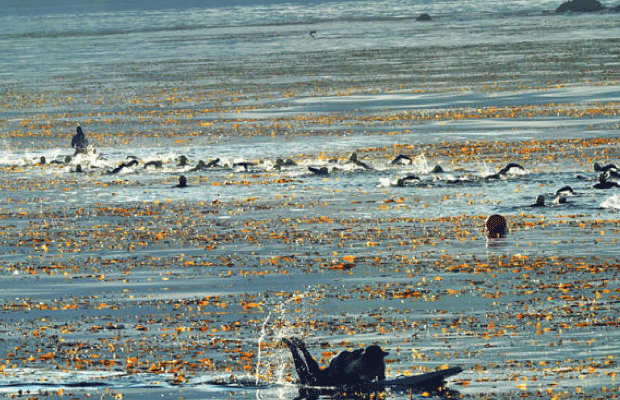
Paddles: I don’t believe these are primarily a strength training device. Rather, they make obvious when you are pulling a lot of water. That is the goal. I wrote about Roka Pro Swim Paddles last year, which I think are a really nice general-use paddle. Finis Agility Paddles are specifically designed to not work well unless you are swimming using the sort of catch and pull dynamics I talked about in the most recent previous Guppy installment. As one Slowtwitcher pointed out, the fact that the Agility paddles don’t use a strap make this an ideal paddle for sets that move to and away from pulling during a timed set.
Ankle Bands: There are two ways to offset mistakes in your stroke. One way is just to correct them. The second way is to mitigate these stroke mistakes with a second mistake that offsets the first. “Crossing over” refers to a catch that occurs not in the front of your shoulder, but past that point, past the body’s centerline. With adult onset swimmers this most frequently happens on the side you breathe on, and it happens when a swimmer exaggerates the process of taking a breath. This pulls the body out of line. How do you mitigate this? If you breathe on the left, the adult onset swimmer naturally pulls to the left. One of your legs pulls to the left as well, to counterbalance this. The result is that your legs splay wide during the kick. Binding your ankles keeps you from performing this mitigation. In fact, when you swim with bound ankles and you pull your body offline to the left, now both your legs will pull to the left to counterbalance. You’ve now exposed the problem. With practice you will find a way to swim without your legs fishtailing like an eel.
Buoy: If you bind your ankles you now must float your legs (hence the buoy), because you can’t kick and if you can’t kick your legs will sink. Bear in mind, there's a difference of opinion about this. You'll read a Facebook comment below from an extremely accomplished swimmer, and what he writes is correct. But, for whom? For how many? Here's a conundrum for swimming and for all of triathlon's constituent activities: Do we teach the most advanced method of executing an activity? If not, where's the line drawn? That's a discussion absolutely worth having, but is too big for today's Guppy Challenge installment.
Kickboard: Up to you. Depends on how you like to kick. If you use a snorkel you don’t really need a kickboard (though it's okay to kick with a board and a snorkel). A lot of swimmers kick on their backs, negating the need for a kickboard. That said, most swimmers use a kickboard. I’m ambivalent.
Zoomers: These are very short fins, used only for swimming. I’m not against them, but, as with Swim Sleeves (see below) these are best used by those who just can’t perform the task. They become less useful as you become more adept at kicking.
Snorkel: Ameo Powerbreather makes an interesting one. Finis championed the concept. The value of this device is legion. It helps you to swim symmetrically. You have no excuse to pull yourself offline by breathing if you don’t have to breathe. So, the use of a snorkel with bound ankles allows you to perfect a symmetric stroke and cure your stroke of fishtailing. A snorkel is also good to use while kicking if you, like I, suffer from spinal stenosis and it’s hard to look forward while kicking with a board. I don’t try to swim fast with a snorkel. Flip turn with a snorkel or don't. This is simply a device I use when perfecting technique. Read what a world class swimmer wrote to his fellow Slowtwitchers about the use of a snorkel.
Swim Sleeves: I like De Soto Extreme Swim Sleeves because they float your arms. They make it easier for you to keep your arms – shoulder to hands – level with the surface of the water during the glide or extend phase after the catch. Very few swimmers do this well, but very good swimmers do this well. This prepares you to form a pulling surface from your shoulder to your fingertip, and to form it in front of your body, giving you a nice long pull during which you have that pulling surface perpendicular to the water it’s pulling. This element of swim technique is another that good swim coaches fight over: Should we teach high elbow anchor to triathletes? I think we should. Just, this is the current debate.
You might wonder whether anybody has come up with a swim paddle that gets your forearms into the action. Again it’s Finis to the rescue, with the Bolster Paddle Here’s a video of what it looks like in action. I’m not showing you this video because I think you should run out and get this paddle, rather that it’s a great example of the hand and arm position after the catch. This elbow-to-fingertip "behavior" is what the Bolster Paddle, and the Finish Agility Paddle, and the De Soto Extreme Swim Sleeves all are designed to prompt.
Which among these implements you use is up to you. I require you to use none of them. You can use as many as you want. And with that…
Guppy Challenge, Week-6, Workout-1
Warm-up => 6 x 50yd
Style set => 6 x 100yd: Your choice: swimming with bound ankles, with or without snorkel. Or, 1-arm pulls, as previously described. Or 3 of each. Flip turn or don’t, but these are done easy-to-moderate. Not hard!
Kick set => 6 x 50yd, with or without zoomers, but the last 2 should be without zoomers.
Main set =>
GUPPIES => 4 x 200yd, on your interval (5sec to 15sec rest between each)
TARPONS => 6 x 200yd, on your interval (5sec to 15sec rest between each)
TUNAS => 8 x 200yd, on your interval (5sec to 15sec rest between each)
Warm-down => 100yd, easy, alternate freestyle and stroke.
Total Guppy yards this workout: 2100
—
Guppy Challenge, Week-6, Workout-2
Warm-up => 2 x 50yd, 2 x 100, 2 x 150 freestyle, easy. On a leave interval 5sec to 10sec slower than your regular leave interval.
Style set => 10 x 50yd: A 2-beat kick is 1 kick for every arm pull. A lot of distance swimmers use this kick. A typical kick is a 6-beat kick, which is 6 kicks for every “cycle”, which is 2 arm pulls. A 4-beat kick is a hybrid of these, 3 beats for 1 arm pull, 1 beat for the other, and a lot of swimmers use this. For this drill, I want you to kick a 2-beat kick for the first 25, and whatever your normal kick to return.
Kick set => 6 x 50yd, with or without zoomers, but the last 2 should be without zoomers.
Main set =>
GUPPIES => 3 x 300yd, each 100 is faster than the prior; use your usual leave interval + an extra 10sec per hundred, so, if you usually leave on the 1:40 base you'd leave every 5 minutes on these 300s. But in this case you'd leave every 5:30. Got it?
TARPONS => 4 x 300yd
TUNAS => 5 x 300yd
Warm-down => 100yd, easy, alternate freestyle and stroke.
Total Guppy yards this workout: 2400
—
Guppy Challenge, Week-6, Workout-3
Warm-up => 6 x 50yd freestyle, easy, slow, establish a leave interval that gives you 10sec rest between each 50.
Style set => 3 x 100yd: Your choice: swimming with banded ankles, with or without snorkel. Or, 1-arm pulls, as previously described. Or 3 of each. Flip turn or don’t, but these are done easy-to-moderate. Not hard!
Kick set => 4 x 50yd, with or without zoomers, but the last 2 should be without zoomers.
Main set => Fifties Party!
GUPPIES => 30 x 50yd swim
TARPONS => 40 x 50yd swim
TUNAS => 50 x 50yd swim
Warm-down => 100yd, easy, alternate freestyle and “stroke”.
Total Guppy yards this workout: 2400
—
Guppy Challenge, Week-6, Workout-4 Extra Credit!
Warm-up => 6 x 50yd freestyle, easy, slow, establish a leave interval that gives you 10sec rest between each 50.
Style set => 5 x 50yd w/bound ankles
Style set => 5 x 50yd 2-beat kick out, regular kick back
Main set =>
GUPPIES => 1000yd, straight swim. Do this fairly hard, but don't start hard. Remember your time.
TARPONS => 1500yd, straight swim. Do this fairly hard, but don't start hard. Remember your time.
TUNAS => 2000yd, straight swim. Do this fairly hard, but don't start hard. Remember your time.
Kick set => 4 x 50yd, don’t kick hard, relax, just make your way across the pool, rest 5sec or 10sec, go again.
Warm-down => 200yd, easy freestyle
Total Guppy yards this workout: 2200
—
Guppy Challenge, Week-6, Workout-5 Double Extra Credit!
Warm-up => 5 x 100yd, first 50 1-arm pull, second 50 freestyle
Warm-up => 6 x 100yd: Your choice: bound ankles, w or wo snorkel. Or, 1-arm pulls, as previously described. Or 3 of each. Flip turn or don’t, but these are done easy-to-moderate. Not hard!
Kick set => 6 x 50yd, with or without zoomers, but the last 2 should be without zoomers.
Main set =>
GUPPIES => down-ladder: 400/300/200/100, on your interval, last 100 easy
TARPONS & TUNAS => down-ladder: 500/400/300/200/100, on your interval.
Total Guppy yards this workout: 2400
Total weekly GUPPY yardage
If you do the first 3 workouts: 6,900yd
These plus the 4th workout: 9,100yd
All 5 workouts: 11,500yd
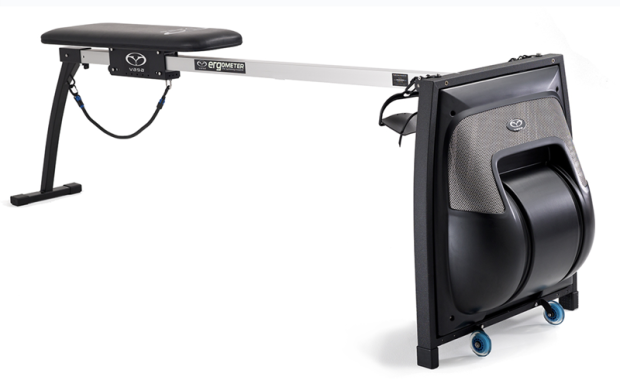
Will a VASA Ergometer (or Vasa Trainer, or similar land-based trainer) equal a pool swim? No. It's not as good as a pool session. Or it's better than a pool session, depending on your interest.
If you want to improve your endurance or your swim technique, it's not as good. If you're looking simply for a strength workout – if you've done as much technique work as you want to do and now you want to add horsepower to the motor – then the VASA does things just swimming alone can't do. So, if you want to sub or add a VASA workout to the above regime, here it is:
Start very easy, alternating arms, building not to exhaustion, but to the point where your technique starts to breakdown, by the time you get to…
– 90 strokes (45 each arm). Rest 3 minutes. Then, same for…
– 80 strokes (40 each arm). Rest 3 minutes. Then…
– 70 strokes. Rest 3 minutes. Then, if you think you have 1 more in you…
– 60 strokes. Rest 3min. If you think you have one more…
– 50 strokes. Rest 3min. If you're a true stud (but don't hurt yourself!)…
– 40 strokes
And you're done. This should not be your first VASA workout! This is a pretty advanced routine, that will take you just under a half-hour if you do everything above. Me, when I do this I use that 3min rest checking the Reader Forum, writing an email, whatever. You need more rest between sets here than with swimming because this workout is completely anaerobic. This workout will not streamline your hull, but it'll add horsepower to your engine.
Just, build up to this! Your arms will fall off if you try to do this as your first workout. You won't make any progress and may set yourself back. So, be careful here. The VASA is a secret weapon. Just, don't shoot yourself with it.


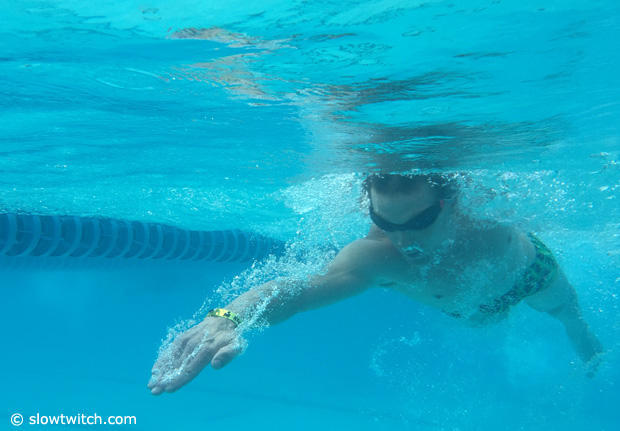
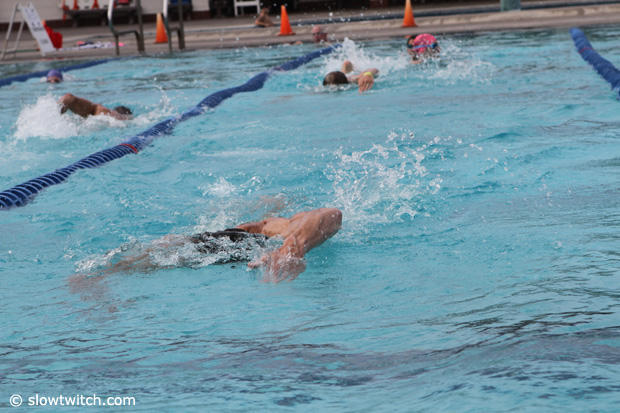
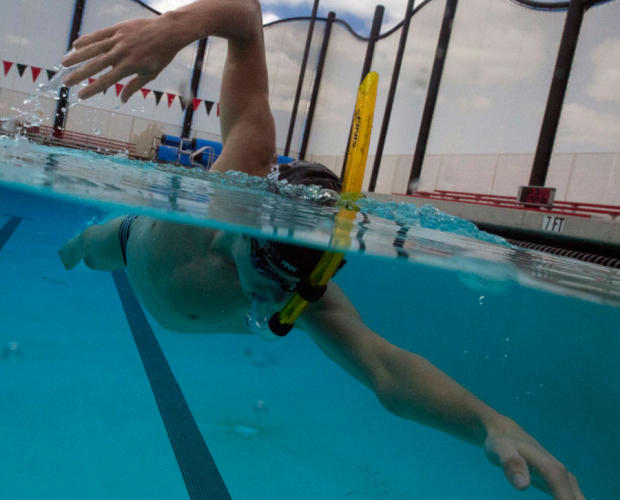
Start the discussion at slowtwitch.northend.network